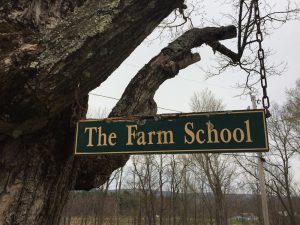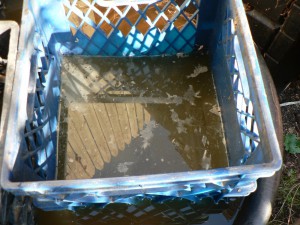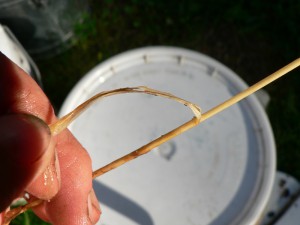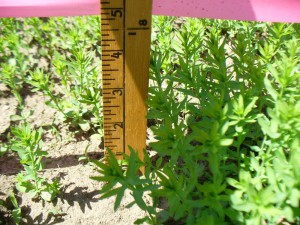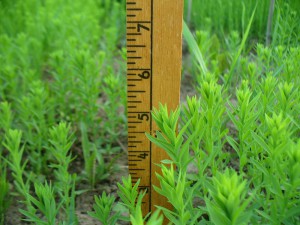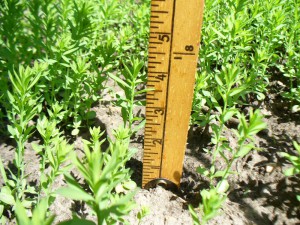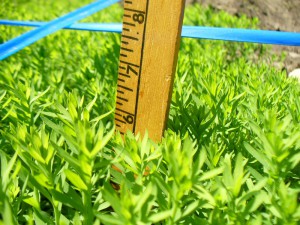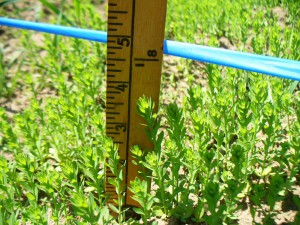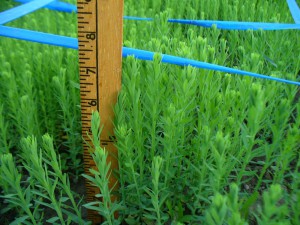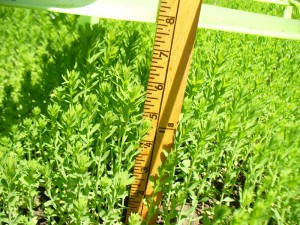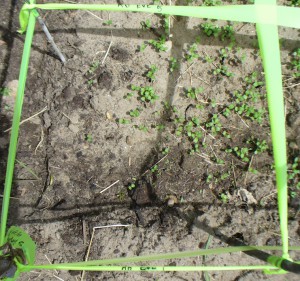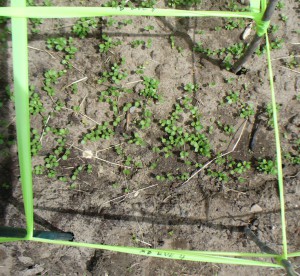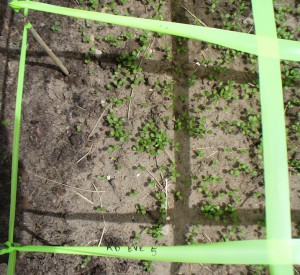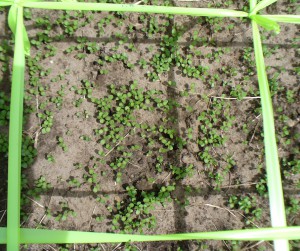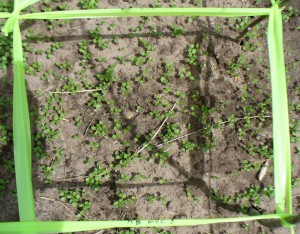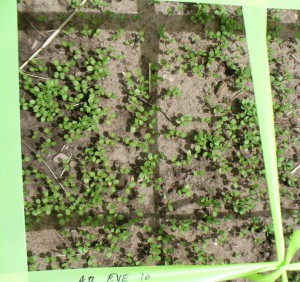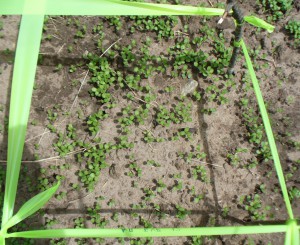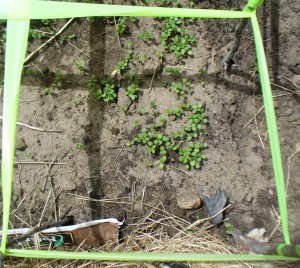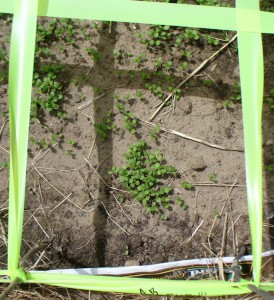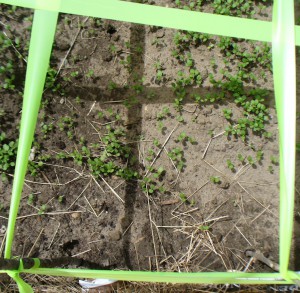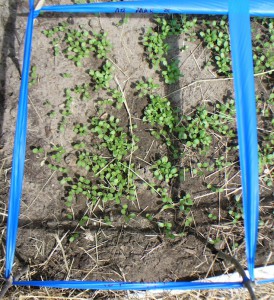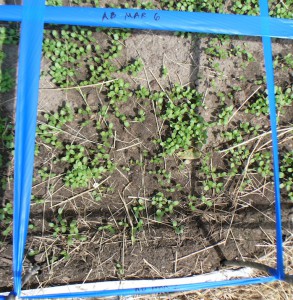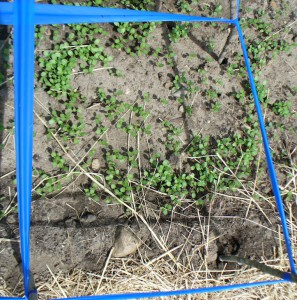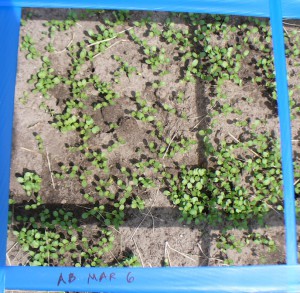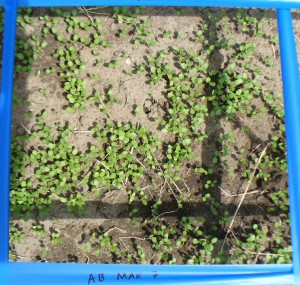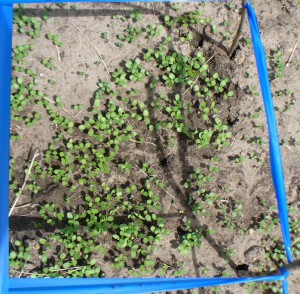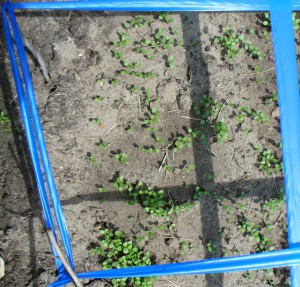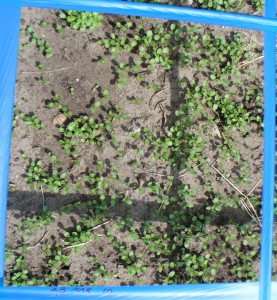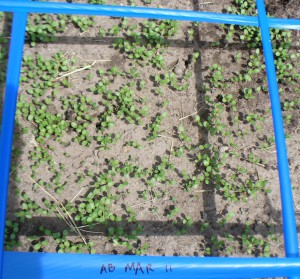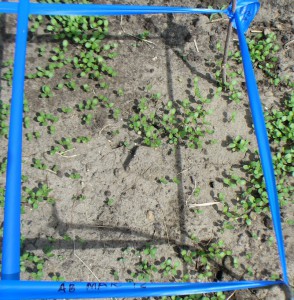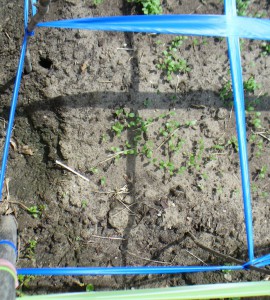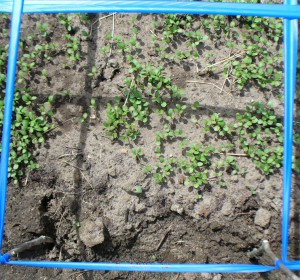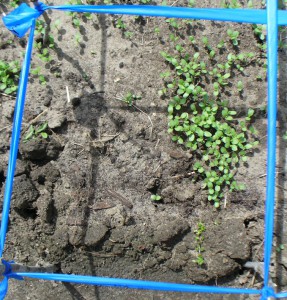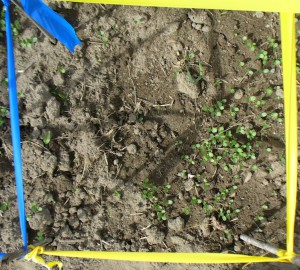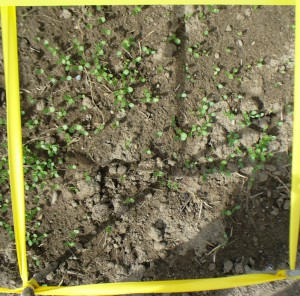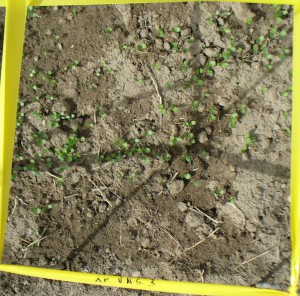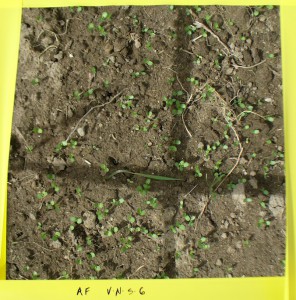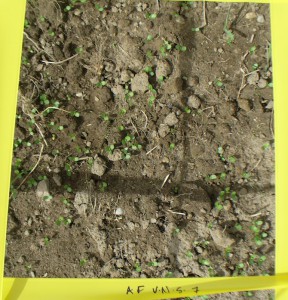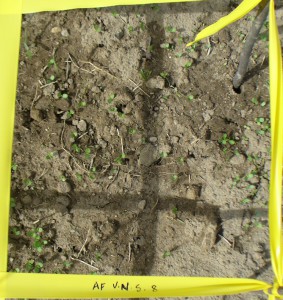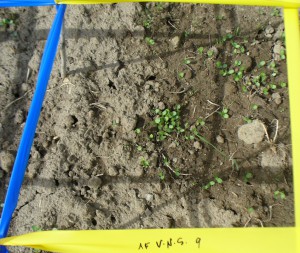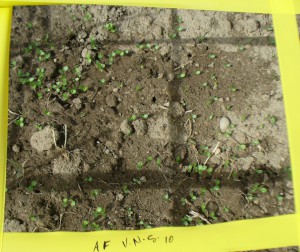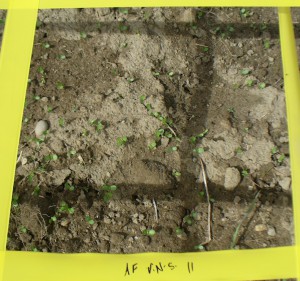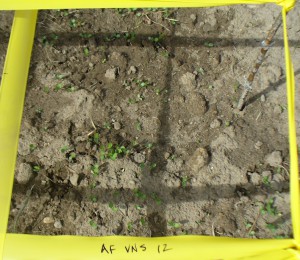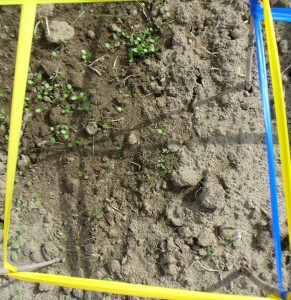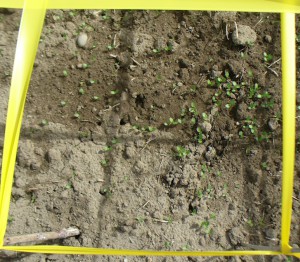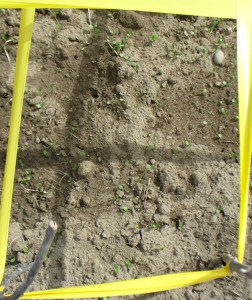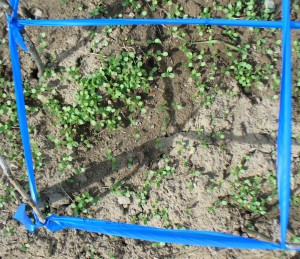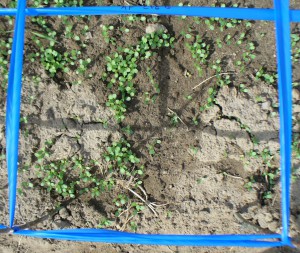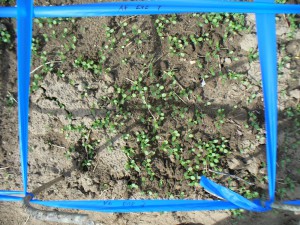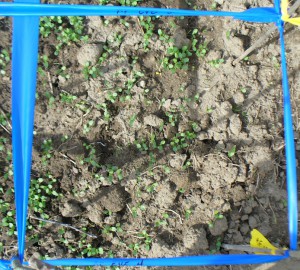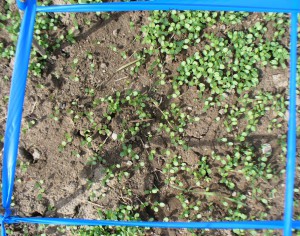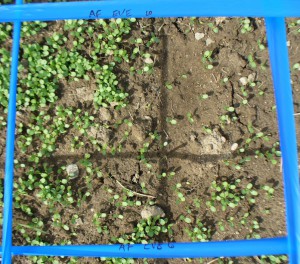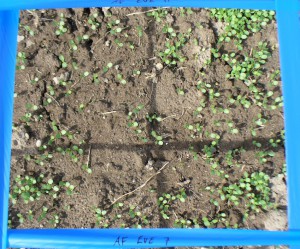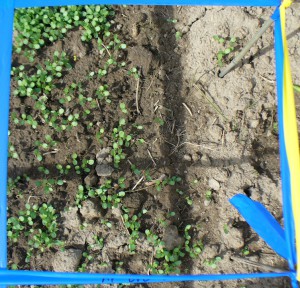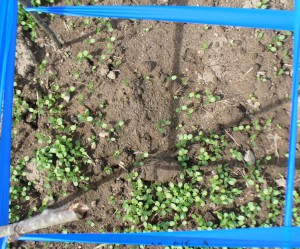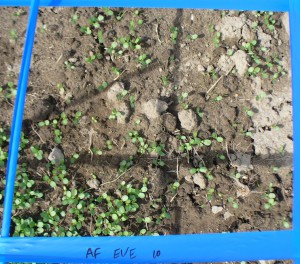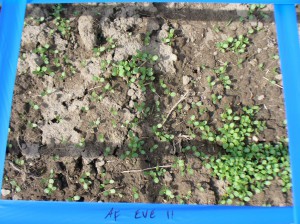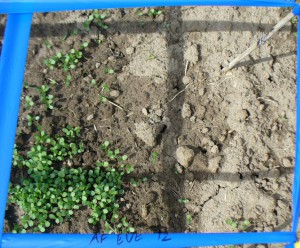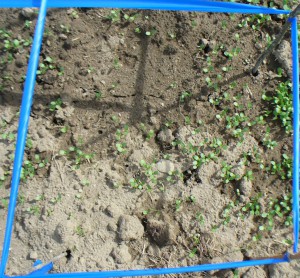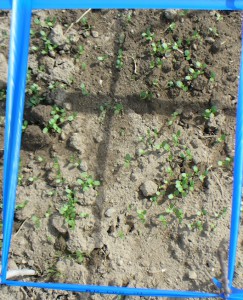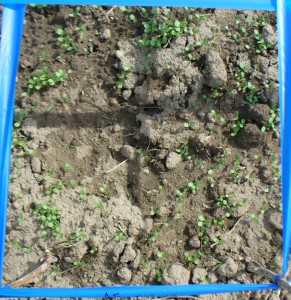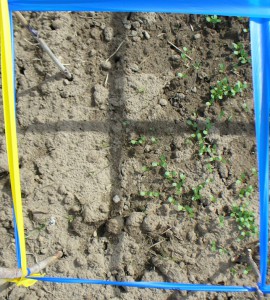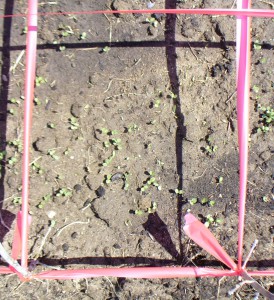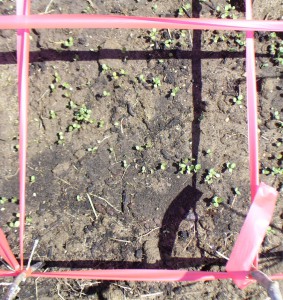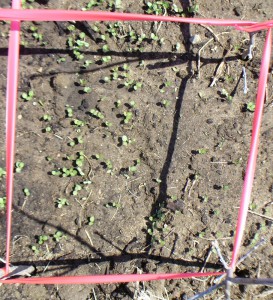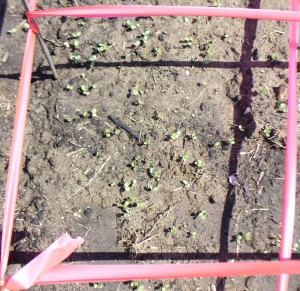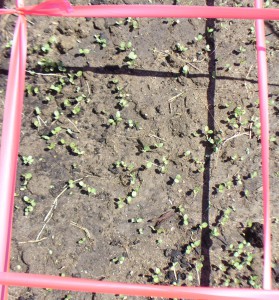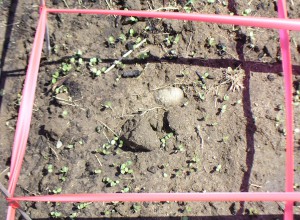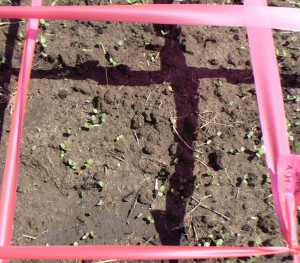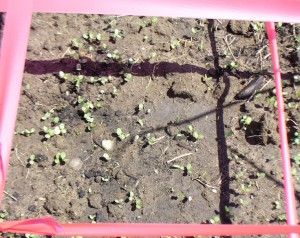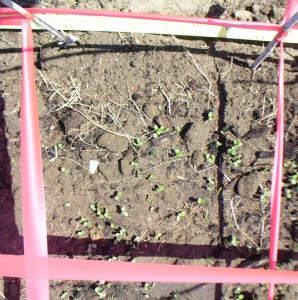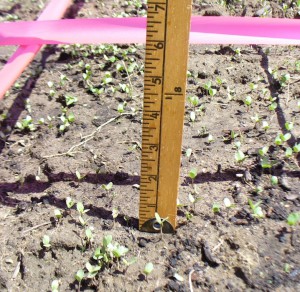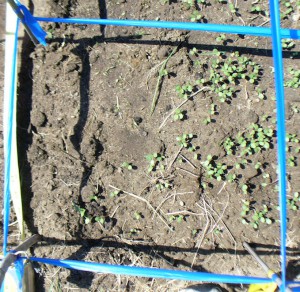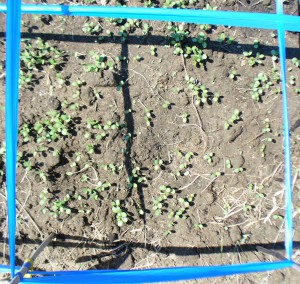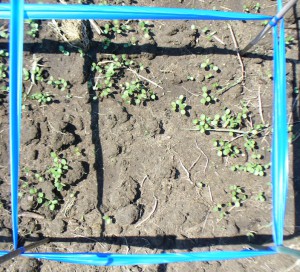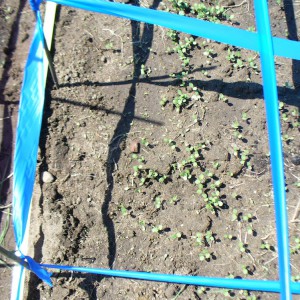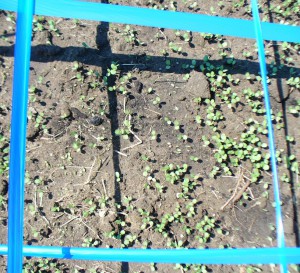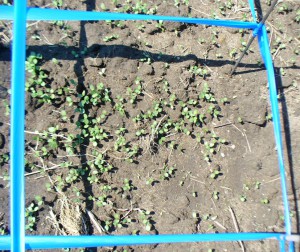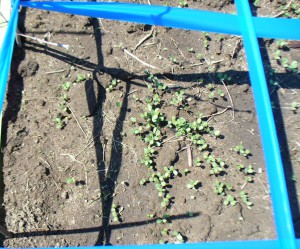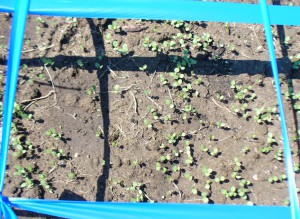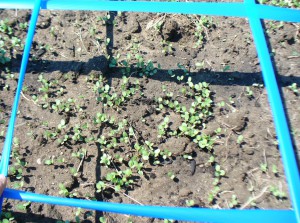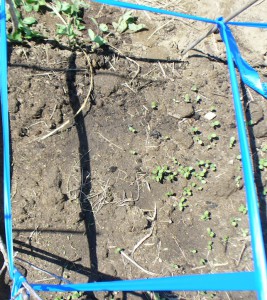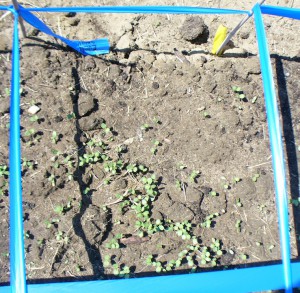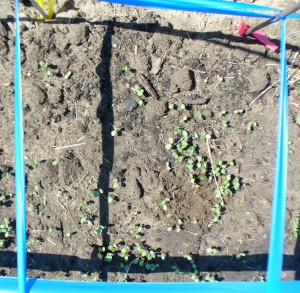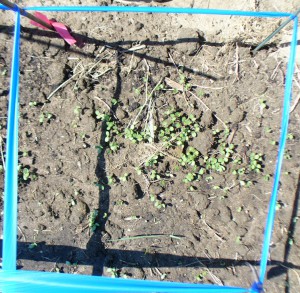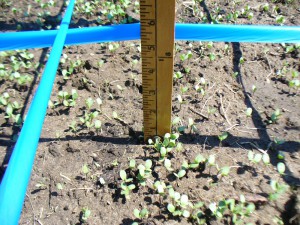One of the fun things I got to do last week was to visit the Farm School in Athol, MA, and to lead a natural dyeing workshop for the participants in their adult farming program. The Farm School combines two of my favorite things: agriculture and education. I had never visited their farm before, so I was thrilled to have the opportunity to be there and to get a better understanding of their different programs. I was greeted by this cheery sign when I first arrived:
Last Year’s Flax is Retted
Summer is rushing along, tipping noticeably toward fall. The Concord grapes are ripe and fragrant, waiting, camouflaged, to surprise passers by. “Mmm, what’s that smell? Oh, grapes!” But right behind our apartment it currently smells like a retting tank and a woad vat. It’s not “Mmm,” it’s somewhere between “Uh…?” and “Ugh!”
Here in Amherst I am happy to report that we have been having glorious weather for the past week. Flax retting, a modest amount of flax processing, dyeing, making salsa (not really in the scope of this blog, I know) are all continuing apace.
For several weeks, the majority of this year’s flax has been drying on the hay tedder in the tractor shed over at Amethyst Farm (thanks to the generosity of the Brennans). To make room to move this year’s crop gradually into the back of our car (which serves as our shed) I had to ret last year’s flax. I posted about that earlier. That is now all complete.
I retted the first batch (from our community garden) in the 50 gallon tank. I didn’t change the water at all during the retting period (from July 27th to August 2nd–six days). Here’s how the water looked when it was ready to pull out.
Note the yellowish grey film on top.
At the flax demonstration in Gilmanton, NH, Gina Gerhard had given Faith and me a tip on how to check when your retting is complete: the fiber should pull away from the stem with absolutely no resistance.
Flax Harvest at Small Ones Farm
Between Wednesday July 11th and Monday July 16th I pulled up all my flax. I started a bit earlier than 90 days after planting (I planted all the plots the same day, April 15th), and earlier than 30 days after peak bloom (which was around June 21st). These had been the two harvest benchmarks I had in mind all summer. However, we have had such hot, dry weather that despite my diligent watering efforts the flax was just done. Usually people recommend pulling it up when the lower third of the stalks turns yellow. I have typically pulled it when more like half or even two thirds of the stalk is yellow. You can see in the photos that this year a lot of the flax was entirely yellow, and a few stalks had even begun to turn brown. Continue reading “Flax Harvest at Small Ones Farm”
Flax Likes Rain
We have had a good amount of rain over the past couple weeks, interspersed with some stunningly gorgeous sunshine. This is flax’s favorite weather (unlike the 90 degrees, dry as a bone weather we had mid-April, which is not). Here’s how it was looking as of May 18th and 19th, last Friday and Saturday.
Above is the v.n.s. at Small Ones Farm May 18, about four inches high.
Above is the v.n.s. at Amethyst Farm May 19, about 5 inches high.
Above is the v.n.s. at Amethyst Brook May 18, about 4 and a half inches high.
Above is Marylin at Amethyst Brook May 18, about six inches high.
Above is Evelin at Small Ones Farm May 18, three and three quarters of an inch high.
Above is Evelin at Amethyst Farm May 19, between 6 and 7 inches.
Above is Evelin at Amethyst Brook May 18, between 5 and 6 inches.
Flax Grids: Evelin at Amethyst Brook
Finally, we reach the end of the flax grid photos. Phew. In future I think a 3’x3′ grid will be enough, or maybe just three one-foot sample squares out of each bed. 4’x4′ was overkill. Anyway, it’s done now. In the time since these photos were taken (April 29th and 30th) the plants have shot up. They are now feathery and about 5 or 6 inches high, and lovely. But here was how the Evelin looked at our community garden, back on April 30th.
Flax Grids: Marylin at Amethyst Brook
Here are the photos of Marylin at Amethyst Brook where we have our community garden plot. They were taken on April 30th. The Marylin growth is the most lush of all the plots, which means it had the best germination rate. It is also the only treated seed variety I grew. I think the treatment is an antifungal agent to prevent rotting the damp soils of early spring. We did not have damp soils this spring. We had dry soils. It was 90 degrees the day after I planted in mid-April. So, I am not sure why the treatment would have given these seeds an advantage, and maybe that’s not really what’s going on. Anyway, here they are:
Flax Grids: “Variety Not Specified” at Amethyst Farm
Without much further ado, here are the photos of the v.n.s. grid from Amethyst Farm. The date on these is April 30th. Read more about the grid set-up here.
Flax Grids: Evelin at Amethyst Farm
Earlier today I was searching the web for interesting tid-bits about Evelin to share, to spice up all these admittedly monotonous photos. I came across Bast and Other Plant Fibers by Robert R. Franck (CRC Press, 2005). Franck lists Evelin as one of 31 fiber flax cultivars approved for use in Europe as of 2002. I didn’t get far enough to figure out why these 31 were approved in particular, or what the differences were between them. A research task for another day. Among other things, I learned that I’ve been spelling the variety “Marilyn” incorrectly. It is actually spelled Marylin, even though I thought I had read that it’s named after Marilyn Monroe. While it merits being on the list, for whatever reason, Evelin was not among the most popular varieties grown in western Europe in 2002. That honor went to four other varieties: Agatha, Hermes, Marylin, and Diane.
I had to laugh at one comment the author made. In outlining the reasons for low productivity in certain countries, he cites one reason as being “the innate conservatism of peasant agriculture.” I think I must fall into that category.
Here are the photos of Evelin growing at Amethyst Farm in Amherst, MA. As before, each square is a foot square, and the full grid is 4 feet square. The images appear in order, numbered from 1 to 16 across the grid from bottom left corner to top right. See my original post for more info on this set-up.
Flax Grids: “Variety Not Specified” at Small Ones Farm
Here are the photos of the “variety not specified” (v.n.s.) flax at Small Ones Farm in South Amherst on April 29th. They are posted in order from square 1 to square 16 in the grid. For an explanation of the grid numbering system, and what these flax grids are all about, see my last post, “Belated Photos of Flax Grids: Evelin at Small Ones Farm.”
Above is a photo showing the height of the vns seedlings on April 29th at Small Ones Farm.
Belated Photos of Flax Grids: Evelin at Small Ones Farm
Back on Sunday April 29th and Monday April 30th I set up one-foot-square grids in my flax beds. I used sticks to stake out the one-foot increments, and flagging tape to outline the edges. They are not perfectly square, but it’ll do. At each plot (Small Ones Farm, Amethyst Farm, and the community garden at Amethyst Brook) I used a different color flagging tape for each variety, but didn’t plan ahead enough to use the same color for each variety at each place. That would have been handy, but too late now. As you might suspect, it is hard to tell from a photo of little green plants just exactly which variety of seed or section of a plot I am looking at. So, I thought the color coding would help differentiate photos back at home when I’ve downloaded them onto the computer and am figuring out which is which. I also wrote labels on the flagging tape, but it twists around sometimes so they aren’t clear in every photo. Each grid is four feet square (the width of the bed, and four feet in length), divided into 16 sections. I took a photo of each section. I have a total of 7 beds, which multiplied by 16 is a lot of photos of little green plants. One hundred and twelve, to be exact. That is too many for one post. It actually has crossed my mind that perhaps not everyone will be interested in looking at 112 photos of flax. But in the interests of documenting this project, I’ve decided to post them all, divided between several posts.
I set up the grids because I wanted a more quantifiable way to measure the germination rates of the different seed varieties, and to count how many plants were growing in each square foot. Mostly what this exercise taught me is that my sowing technique is terrible. I have clumps and bare patches in an extremely uneven pattern. Sigh. Raking did not help at all, so I will omit that step in future. In fact I think many of the ridges where there is a density of plants were created by the edge of the rake. So, there is a lot more to learn about that step of the process. Honestly, I think this season was my worst broadcasting job ever, but then again I have never scrutinized every step of the process so closely.
This post features the variety Evelin (an untreated variety from Richters in Canada) planted at Small Ones Farm in South Amherst. The photos were taken April 29th, and are labeled with the variety, the location, and a number 1 to 16. The squares in the grid are numbered from left to right, starting in the row on the near side of the bed and moving to the back. That is,1 is in the bottom left hand corner, and 16 is in the top right corner. They are posted in order from 1 to 16.
 Above is an overview of the bed of Evelin, and below is a photo showing the height of the plants on April 29th (14 days after planting).
Above is an overview of the bed of Evelin, and below is a photo showing the height of the plants on April 29th (14 days after planting).

